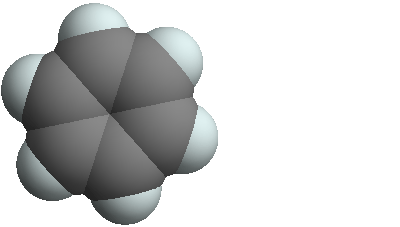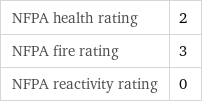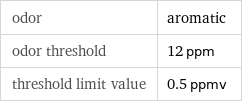Input interpretation

benzene
Chemical names and formulas

formula | C_6H_6 name | benzene alternate names | benzin | benzine | benzol | benzole | benzolene | cyclohexatriene | phenyl hydride | pyrobenzole mass fractions | C (carbon) 92.3% | H (hydrogen) 7.74%
Lewis structure

Draw the Lewis structure of benzene. Start by drawing the overall structure of the molecule, ignoring potential double and triple bonds: Count the total valence electrons of the carbon (n_C, val = 4) and hydrogen (n_H, val = 1) atoms: 6 n_C, val + 6 n_H, val = 30 Calculate the number of electrons needed to completely fill the valence shells for carbon (n_C, full = 8) and hydrogen (n_H, full = 2): 6 n_C, full + 6 n_H, full = 60 Subtracting these two numbers shows that 60 - 30 = 30 bonding electrons are needed. Each bond has two electrons, so in addition to the 12 bonds already present in the diagram add 3 bonds. To minimize formal charge carbon wants 4 bonds. Identify the atoms that want additional bonds and the number of electrons remaining on each atom: Fill in the 3 bonds by pairing electrons between adjacent highlighted atoms. Note that the six atom ring is aromatic, so that the single and double bonds may be rearranged: Answer: | |
3D structure

3D structure
Basic properties

molar mass | 78.11 g/mol phase | liquid (at STP) melting point | 5.5 °C boiling point | 80 °C density | 0.874 g/cm^3 dielectric constant | 2.274
Liquid properties (at STP)

density | 0.874 g/cm^3 vapor pressure | 166 mmHg dynamic viscosity | 6.04×10^-4 Pa s (at 25 °C) surface tension | 0.02822 N/m refractive index | 1.501 UV cutoff wavelength | 280 nm
Units

Thermodynamic properties

specific heat capacity c_p | gas | 1.055 J/(g K) molar heat capacity c_p | gas | 82.4 J/(mol K) specific free energy of formation Δ_fG° | gas | 1.66 kJ/g | liquid | 1.594 kJ/g molar free energy of formation Δ_fG° | gas | 129.7 kJ/mol | liquid | 124.5 kJ/mol specific heat of formation Δ_fH° | gas | 1.061 kJ/g molar heat of formation Δ_fH° | gas | 82.9 kJ/mol molar heat of vaporization | 33.83 kJ/mol | specific heat of vaporization | 0.4331 kJ/g | molar heat of combustion | 3275 kJ/mol | specific heat of combustion | 41.93 kJ/g | molar heat of fusion | 9.87 kJ/mol | specific heat of fusion | 0.12635 kJ/g | thermal conductivity | 0.1429 W/(m K) | critical temperature | 562 K | critical pressure | 4.92 MPa | (at STP)
Chemical identifiers

CAS number | 71-43-2 Beilstein number | 969212 PubChem CID number | 241 SMILES identifier | C1=CC=CC=C1 InChI identifier | InChI=1/C6H6/c1-2-4-6-5-3-1/h1-6H RTECS number | CY1400000 MDL number | MFCD00003009
NFPA label

NFPA label

NFPA health rating | 2 NFPA fire rating | 3 NFPA reactivity rating | 0
Safety properties

flash point | -11.11 °C autoignition point | 498 °C lower explosive limit | 1.3% (concentration in air) upper explosive limit | 7.1% (concentration in air)

DOT hazard class | 3 DOT numbers | 1114
Toxicity properties

odor | aromatic odor threshold | 12 ppm threshold limit value | 0.5 ppmv

long-term exposure limit | 30 mg/m^3 (over 8 hours) RTECS classes | agricultural chemical and pesticide | tumorigen | drug | mutagen | reproductive effector | human data | primary irritant